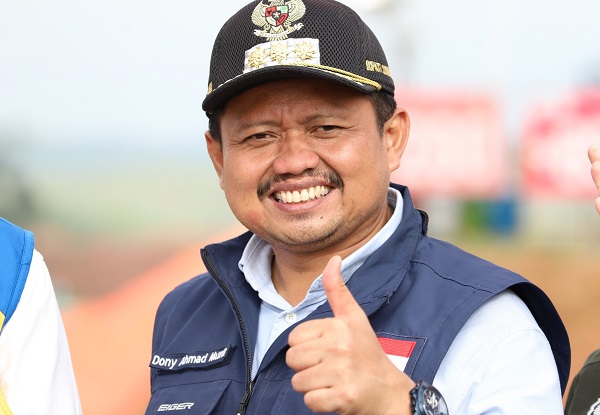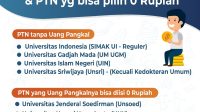
Sumedangkab: The Unique Sundanese Tone of Sumedang
Sumedangkab: An Overview
Sumedang Regency, located in West Java, Indonesia, is home to a distinct Sundanese dialect known as Sumedangkab. This tone is characterized by its soft and melodious nature, setting it apart from other Sundanese dialects. Sumedangkab is spoken by majority of the population of Sumedang and its surrounding areas, and is an integral part of the region’s identity and culture.
The History of Sumedangkab
The origins of Sumedangkab can be traced back to the 16th century when Sumedang was ruled by the Sultanate of Cirebon. During this time, the Sundanese language underwent significant changes, leading to the development of the distinct Sumedangkab dialect. The influence of the Cirebon Sultanate, coupled with Sumedang’s unique geographical location, contributed to the formation of this unique tone.
Characteristics of Sumedangkab
Sumedangkab is distinguished by its soft, melodious, and flowing pronunciation. The vowels are pronounced clearly and distinctly, while the consonants are often softened. This melodious nature makes Sumedangkab a delight to listen to and has contributed to its popularity among Sundanese speakers. Furthermore, Sumedangkab has a relatively simple grammar structure, making it easy to learn and understand, even for those unfamiliar with other Sundanese dialects.
Differences Between Sumedangkab and Other Sundanese Dialects
Sumedangkab differs from other Sundanese dialects in several key aspects. Firstly, it has a unique intonation pattern, with a distinctive rise and fall in pitch. This intonation pattern gives Sumedangkab its characteristic melodic quality. Additionally, Sumedangkab has a distinct vocabulary, with words and phrases that are not found in other Sundanese dialects. These unique words and phrases often reflect the cultural and historical heritage of the Sumedang people.
The Influence of Sumedangkab on Sundanese Culture
Sumedangkab has played a significant role in shaping Sundanese culture. The dialect is featured in numerous traditional songs, poems, and folktales, contributing to the preservation and transmission of cultural heritage. Moreover, Sumedangkab is used in various forms of traditional performing arts, such as wayang golek puppet shows and ronggeng performances, further enriching Sundanese cultural expression.
The Use of Sumedangkab Today
In contemporary times, Sumedangkab continues to be widely spoken in Sumedang and its surrounding areas. It is the primary language of communication within the local community and is used in schools, government offices, and businesses. Additionally, Sumedangkab has gained popularity as a medium of instruction in cultural and language courses, allowing people from different regions to learn and appreciate this unique dialect.
Efforts to Preserve Sumedangkab
Recognizing the importance of Sumedangkab as a cultural heritage, there have been ongoing efforts to preserve and promote the dialect. These efforts include the publication of books and articles on Sumedangkab, the organization of cultural events showcasing the dialect, and the establishment of language courses to teach Sumedangkab to younger generations. These initiatives aim to ensure that Sumedangkab continues to thrive and flourish in the years to come.
Conclusion
Sumedangkab is a unique and beautiful Sundanese dialect that has played a significant role in shaping the cultural identity of Sumedang Regency. Its soft, melodious nature, distinct intonation pattern, and unique vocabulary make it a pleasure to listen to and speak. As a living language, Sumedangkab continues to be widely used in the region and is actively promoted to ensure its preservation and transmission to future generations.
FAQs
-
What is the difference between Sumedangkab and other Sundanese dialects?
Sumedangkab differs from other Sundanese dialects in its intonation pattern, vocabulary, and grammar structure. It has a distinctive rise and fall in pitch, unique words and phrases, and a relatively simple grammar structure. -
Why is it important to preserve Sumedangkab?
Sumedangkab is an important cultural heritage that reflects the unique identity of the Sumedang people. Preserving the dialect helps maintain cultural diversity and ensures that future generations can appreciate and understand the region’s history and traditions. -
How can I learn Sumedangkab?
There are several ways to learn Sumedangkab. You can attend language courses offered by local cultural organizations or schools, or find online resources such as books, articles, and videos that provide instruction on the dialect. Additionally, immersing yourself in the Sumedang community and interacting with native speakers can help you learn and improve your proficiency in Sumedangkab. -
Where can I hear Sumedangkab being spoken?
Sumedangkab is primarily spoken in Sumedang Regency and its surrounding areas in West Java, Indonesia. You can hear the dialect in everyday conversations, traditional performances, and cultural events held in the region. -
What are some unique features of Sumedangkab vocabulary?
Sumedangkab has a distinct vocabulary that includes words and phrases that are not found in other Sundanese dialects. These unique words often reflect the cultural and historical heritage of the Sumedang people and add richness to the dialect.





